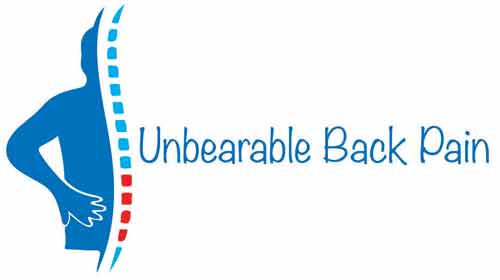
Lower back pain is a common ailment that can arise suddenly or over some time. The discomfort can be debilitating, whether it’s due to a sedentary lifestyle, heavy lifting, a sudden injury, or even stress. Whatever your case, I guarantee you are left feeling alone, isolated, and helpless. But all is not lost...targeted exercise can help manage, and often reduce lower back pain.
But before undertaking any form of exercise, it’s crucial to understand why it can work. By strengthening the muscles in your back, core, and legs, you’re creating a support system for your spine. It’s like building a scaffold around a building. In addition, if you include stretch exercises, you’ll find they’re like oiling a squeaky hinge – they help maintain flexibility and range of motion, which can prevent pain.
Yet, I can’t stress enough how important it is to talk with a healthcare provider before you start any new exercise program. Such a conversation is essential as it can help you rule out serious conditions that might be causing your pain. Moreover, specialists can provide critical guidance tailored to your specific health needs.
When I first suffered from severe back pain I was advised to rest, avoid all physical activity, and try to lay flat on my back as often as possible. It didn’t work! But that was thirty years ago, and our medical knowledge has moved on considerably. So it’s time to discard any outdated notions and old wives’ tales. Active recovery, which includes specific exercises, is more effective in many cases. But remember, each person’s back pain is as unique as their fingerprints, and your exercise plan should reflect that individuality.
Keep in mind that the goal is to alleviate pain, not exacerbate it. The best exercises that are widely recommended for lower back pain relief range from simple stretches that you can do anytime, anywhere, to strengthening moves that will require a bit more effort and consistency.

Best Exercises for Alleviating Lower Back Pain
When your back aches, your entire focus shifts to finding relief. I know the feeling well. But it’s important to choose the right exercises to not only ease the pain but also to prevent further issues.
Partial crunches are a great place to start. They strengthen your core and back without putting too much strain on your lower back. To do these correctly, lie on your back with your knees bent, feet flat on the floor, and hands behind your head. Lift your shoulders off the floor slightly, hold for a second, then slowly lower back down.
Wall sits can also be beneficial. Stand about 10 to 12 inches (250 to 300 mm) from the wall, then lean back until your back is flat against the wall. Slide down until your knees are bent at about a 90-degree angle, hold this position for 10 seconds, then carefully slide back up. Repeat a few times.
Bridging is another effective exercise. Lie on your back with knees bent and feet flat on the ground, hip-width apart. Press your heels into the floor, squeeze your buttocks, and lift your hips into the air, forming a straight line from your shoulders to your knees. Hold for a few seconds then gently lower your hips back to the floor and repeat.
Stretching exercises, especially for your hamstrings, can alleviate back tension. But keep your stretches gentle because aggressive stretching might cause more harm. Look for movements that are comfortable yet offer a mild pull.
Building a strong core is crucial for lower back health. But don’t mistake this for meaning that you have to work towards getting a bodybuilder physique. Deep core muscles matter more for stability. Exercises like the plank ( where you get yourself into a push-up position and hold yourself rigid) can work wonders for your core.
Always remember that the goal isn’t to push yourself to a point where you are in pain. If an exercise causes discomfort, you must stop, listen to your body, and don’t rush the process.
If you feel comfortable with exercises you can do on your own that’s fine, but it’s equally important to consider getting professional guidance.

Collaborating with Professionals to Manage Lower Back Pain
When you’re trying to deal with the agony of lower back pain, the idea of making appointments and spending the extra time and money can seem frustrating or even daunting. However, teaming up with a physical therapist or a certified fitness trainer could be the best investment you could make for your back’s health.
Why work with a professional? I can only guide you from personal experience. Following surgery on my discs, in a London hospital, the surgeon advised me to visit a physiotherapist who practiced near to my home town. On his admittance, he had never met her but went on to say that he had only ever heard good things. He explained that she (and others like her) have a deep understanding of body mechanics and can tailor a program specifically for your needs, which is something generic exercises simply can’t match. Here’s what you’re likely to experience in a session with a professional:
- A thorough assessment of your back’s condition, range of motion, and pain levels.
- Identification of the exercises that are likely to benefit you the most and those you should avoid.
- A personalized plan that takes into account your fitness level, lifestyle, and goals.
- Guidance on the correct form and execution of exercises to prevent further injuries.
Remember, the goal is not just to ease your current pain but to build resilience in your back muscles for the future. A professional’s oversight ensures that you’re not just going through the motions, but making progress.
They also serve as a barometer for your improvement. As you get stronger and more flexible, they’ll adjust your exercises accordingly, making sure you continue to challenge your back safely and effectively.

Designing an At-Home Exercise Routine for Your Lower Back
Creating an effective at-home exercise routine to combat lower back pain doesn’t require fancy equipment or a lot of space. The key is consistency and a clear understanding of what’s good for your back.
Start small and simple. You might begin with daily stretches to improve flexibility or low-impact activities like walking or swimming, if accessible. Remember, it’s all about gradual improvement.
One essential principle is to listen to your body. Any sharp pain or discomfort means you should stop and think about what you are doing. you mustn’t push too hard because you will be in danger of causing more harm. Build intensity and duration over time.
Remember that technology can be like having a friend alongside you to guide and encourage. Use videos from reputable sources to ensure you’re executing moves correctly. There are also apps to remind you to exercise and to track your progress.
Always remember to schedule rest days. Recovery is just as crucial as the exercise itself because it’s during these periods that your muscles repair and strengthen.
Finally, if your pain doesn’t improve or worsens, contact a healthcare professional. They can provide guidance and, if necessary, adjust your routine to better suit your needs.
Final Thoughts
While exercise is undeniably one of the most effective ways to alleviate lower back pain and build strength, other tools can provide valuable support in your daily life. The Comfytemp Cordless Back Heat Pad with Massager is a fantastic option for those seeking relief from discomfort.
Although it won’t cure back problems outright, its ergonomic design and soothing features can improve posture and reduce strain during everyday activities, complementing your exercise routine for a more holistic approach to back care.

Take control of your back health—combine consistent exercise with practical tools like the Comfytemp Cordless Back Heat Pad to move through life more comfortably. Your back deserves it!
“Here’s a little transparency: Our website contains affiliate links. This means we may receive a small commission if you click and purchase. Don’t worry, there’s no extra cost to you. It’s a simple way you can support our mission to bring you quality back relief content.”

